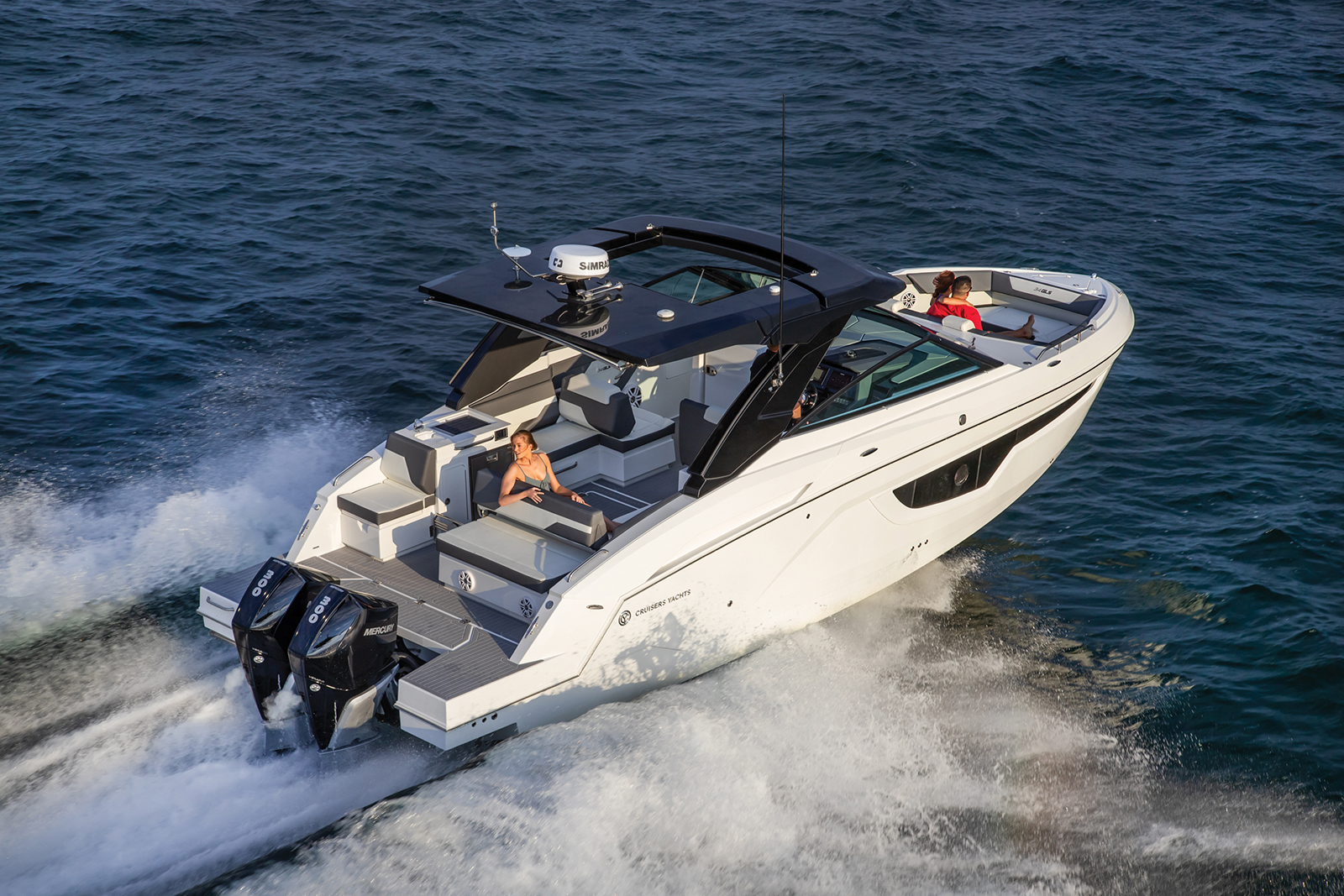In many ways, a small boat is harder to control than a larger one.
By Dusty Miller
For years, boaters dream of upgrading to a larger model such as a trawler or express cruiser with plans to enjoy extended trips down to Florida or beyond. An upgrade from a runabout to a large cruiser is a big step, but by learning important boat handling fundamentals and pertinent safety requirements in a small boat, the transition to a cruiser is a lot smoother and much more enjoyable.
It’s easy enough to land a small boat without paying too much attention to the effects of the wind or momentum. If the landing does go awry, the boat is light enough to allow someone on the dock to easily pull it in with a line. However, if you learn to land a small boat properly (using momentum and the right approach angles), you’ll be quite adept by the time you take the plunge with handling a cruiser.
In many ways, a small boat is harder to control than a larger one. A crosswind can quickly take you for a short ride, waves can easily throw you off your course (or even into the dock or another boat), and you don’t have a lot momentum. So, you really have to pay attention to the way the boat is moving and make quick cor-rections. If you get distracted or are not focused, you can be off course in seconds. Fortunately, it’s usually relatively easy to regain control, but it’s far better to stay attentive until you have safely docked.
Owning a small boat also forces you to learn many other common fundamentals. For example, when boarding a smaller vessel it’s too easy to find yourself spread-eagled over open water between the boat and the dock (with a dunk in the lake being the only way out of the situation!) Additionally, if you don’t stow gear or equipment carefully they’ll easily be blown out of the cockpit while underway.
Passenger weight must also be properly distributed. Too much weight in the stern can make it difficult or impossible to get on plane and too much weight in the bow can make it very hard to steer. In extreme cases, a poorly balanced load can make the boat vulnerable to swamping.
When it comes to safety equipment, the regulations are just the minimum requirements, a starting point. It’s always wise to bring along more than you need. A few paddles, two or three throwing lines and several PFDs are just a few examples. It’s also a good idea to carry a spare prop and prop wrench in case you bend a blade.
While the safety equipment has to be properly stowed, it also has to be quickly accessible. For instance, if you’re swamped you need to know where the lifejackets are immediately. If you have to crawl under the bow and move the anchor and rode to get them, it may be too late. Also, be sure flares are up to date, fire extinguishers have been recharged and on schedule, and you know where everything is when you need it.
Before you set out, check the bilges for water, the oil and fuel levels, and even test the blower and the bilge pump(s) to ensure the manual switch and/or float switch are working.
All these basic points are applicable for when you upgrade to a larger craft. I strongly encourage everyone who sets out in a small boat to use experience as a learning curve. Take some lessons and practice handling your boat right away until it becomes second nature and understand the safety rules. It will provide a lot more enjoyment and you’ll discover boating is one dream that can be as much fun and as real as you imagined!
Keyword : boat flares, boat gear, boat lessons, boat pfds, boat practice, boat weight, Cruiser, Cruisers yachts, Cruisers Yachts 34 GLS, dockage, docking your boat, fire extenguishers, fire extinguishers, learn to dock your boat, passenger weight, propellers, Safety Equipment, spare prop, stow boat gear, stow gear boat flares, boat gear, boat lessons, boat pfds, boat practice, boat weight, Cruiser, Cruisers yachts, Cruisers Yachts 34 GLS, dockage, docking your boat, fire extenguishers, fire extinguishers, learn to dock your boat, passenger weight, propellers, Safety Equipment, spare prop, stow boat gear, stow gear

